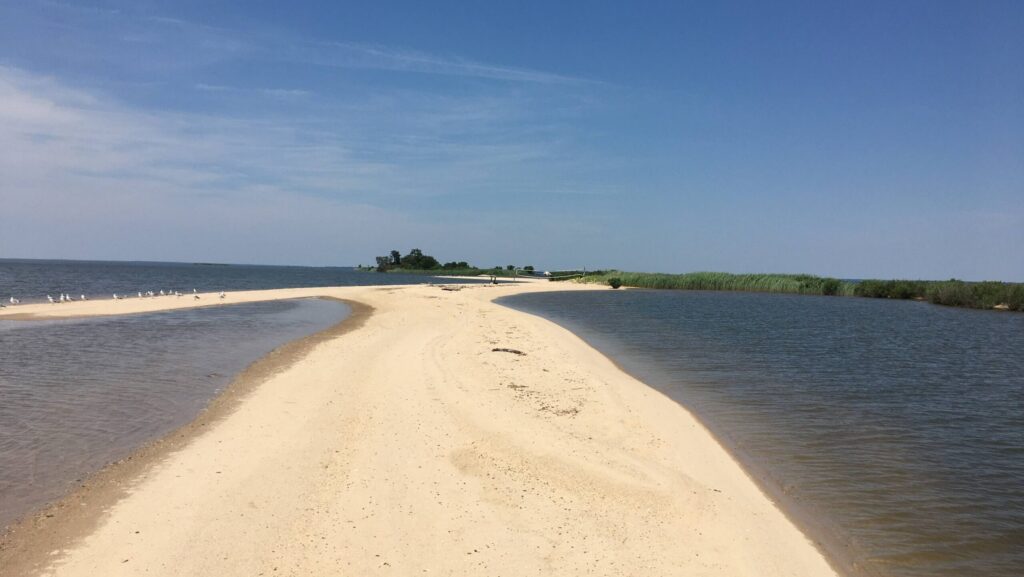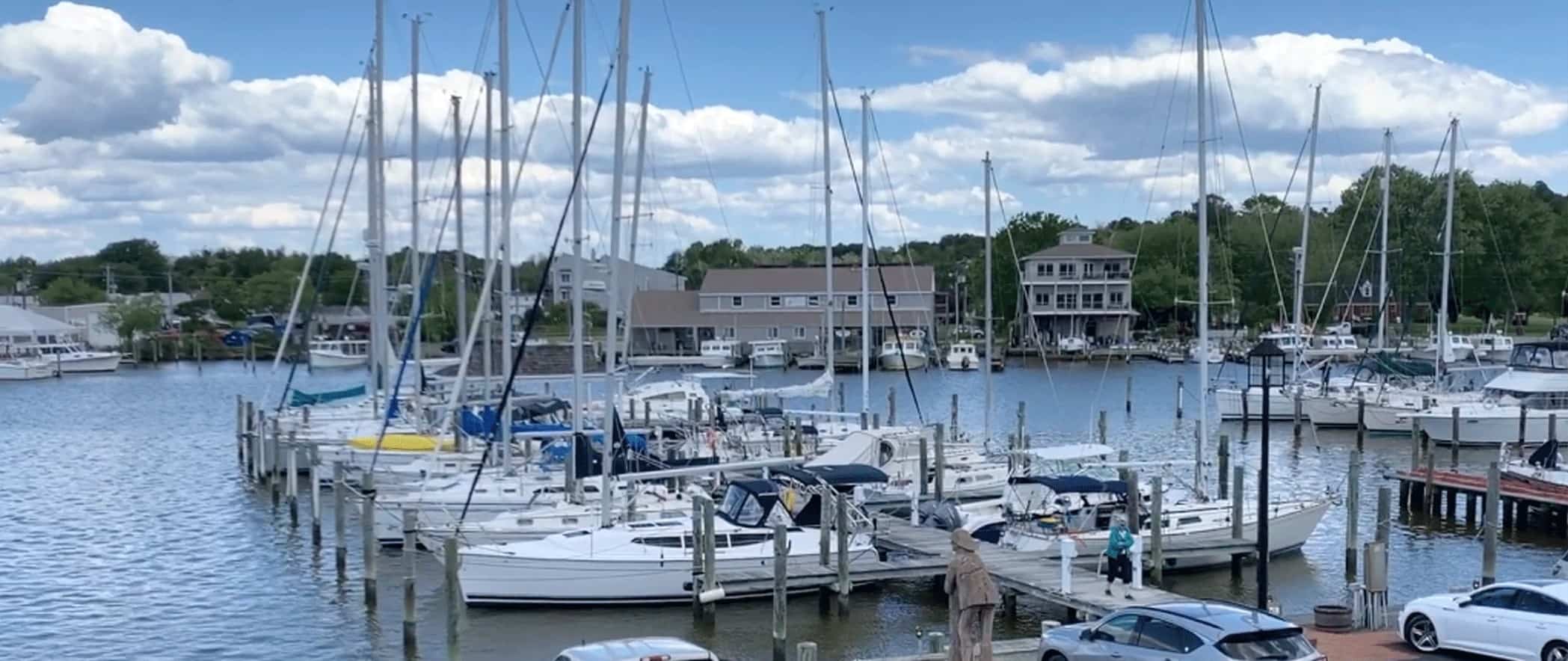Hear CBM editorial director Meg Viviano on WTOP Radio talking about Hollis “Shark Tooth Island:
Hollis Island, or “Shark Tooth Island,” as it’s more widely known, is a beloved sandbar on the Potomac River known for its fossils, specifically shark teeth. A popular destination for recreational boaters interested in beachcombing, Shark Tooth Island extends into the river just north of Montross, Virginia, and acts as a funnel for the deposits released from cliffs upriver at Westmoreland State Park.
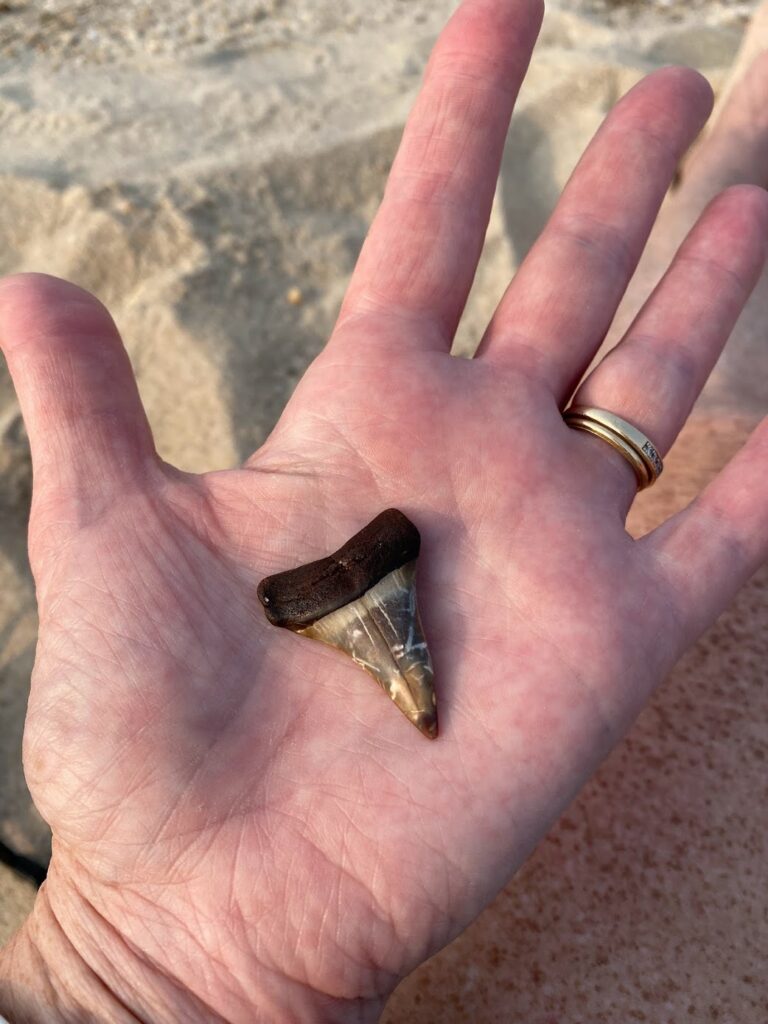
The island is privately owned, and for years has charged an annual permit fee for boaters who come in search the shoreline for treasures from the Miocene era. Fossilized shark and porpoise teeth, shells, and the remnants of creatures who lived in the Chesapeake many, many years ago are collected by the handful.
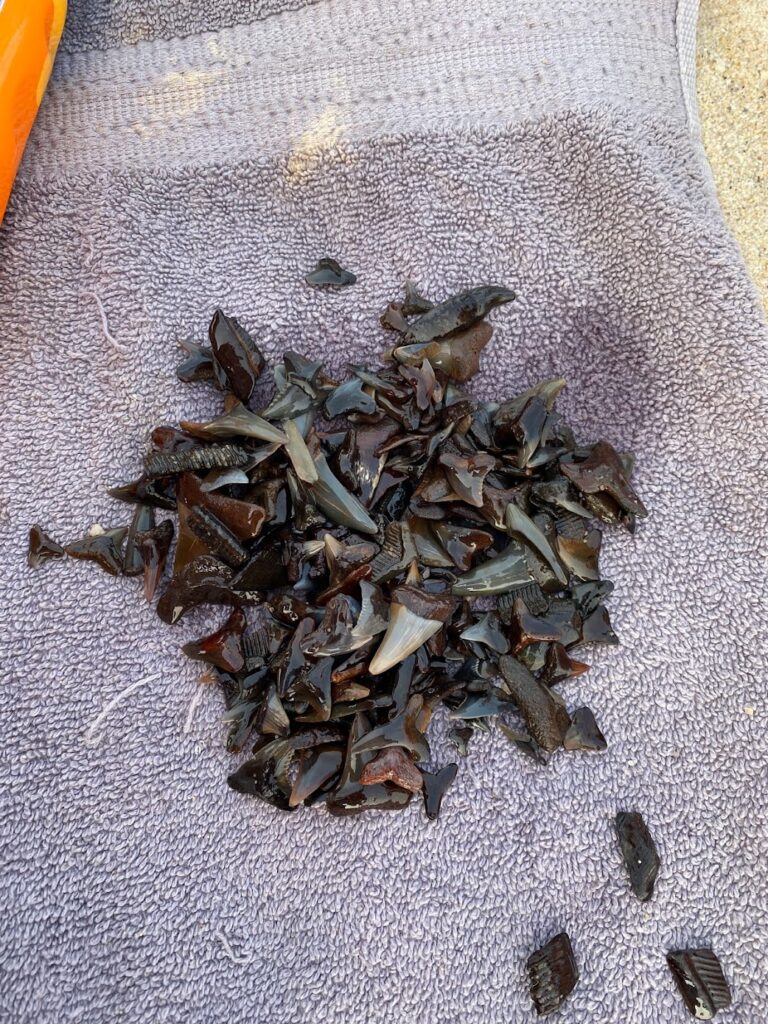
But over the last several decades, Shark Tooth Island has changed shape, and size. Aerial photographs between 1994 and 2024 show that over 32 acres of island have been lost (roughly half the sandbar), and the “island” is today in two separate segments.
A research team from the University of Mary Washington is seeking to use the sandbar as an example of the effects of rising sea levels and groundwater withdrawal, educating the public on the reasons for and effects of climate change.
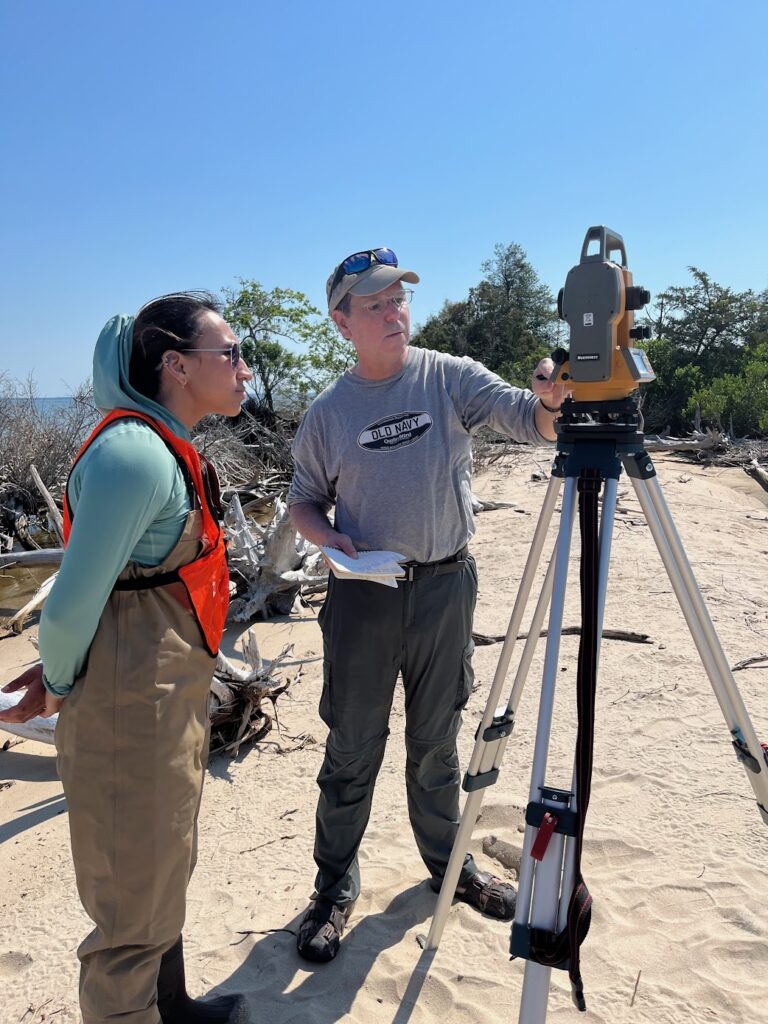
“Our goal is to use the island to make the concept of climate change real and personal by showing the effects on a place people really care about,” says Professor John Tippett, who has been advising a team of researchers since October. Tippett has been coming to Shark Tooth Island since he was just 12 years old, and feels a great affection for the sandbar. “Anyone who goes there knows that it’s disappearing, and we hope to share with them the why.”
On July 27, Tippett and his team will set up a tent on Shark Tooth Island to share their findings with the general public. With a poster and educational materials, Tippett hopes to shed light on the causes, both man-made and natural, leading to the disintegration of the island.
Tippett’s team includes Kate Stoneman and Holly Anthony, both environmental science majors at Mary Washington, and together the team seeks to estimate how much longer the island has left, based on island elevation and the rate of relative sea level rise.

For boaters interested in visiting Shark Tooth Island for the first time, it’s important to know that a permit is required, and they are given out on a seasonal basis. If you are planning on beaching your boat, know that there are specific areas on the sandbar that are better for this: to protect the integrity of the sandbar, bring your kayak ashore at the sandy beach area rather than the marshy areas with vegetation.
To order your permit for Shark Tooth Island, boaters should expect to pay $250 for most boats, $255 for jet skis, and $100 per kayak. Permits are valid through September 15. To apply, email 2islandfox@gmail.com.
All summer we’ve been collecting ideal beachcombing spots that are open to the public. Read our list here, and let us know where you love to look for treasures!

